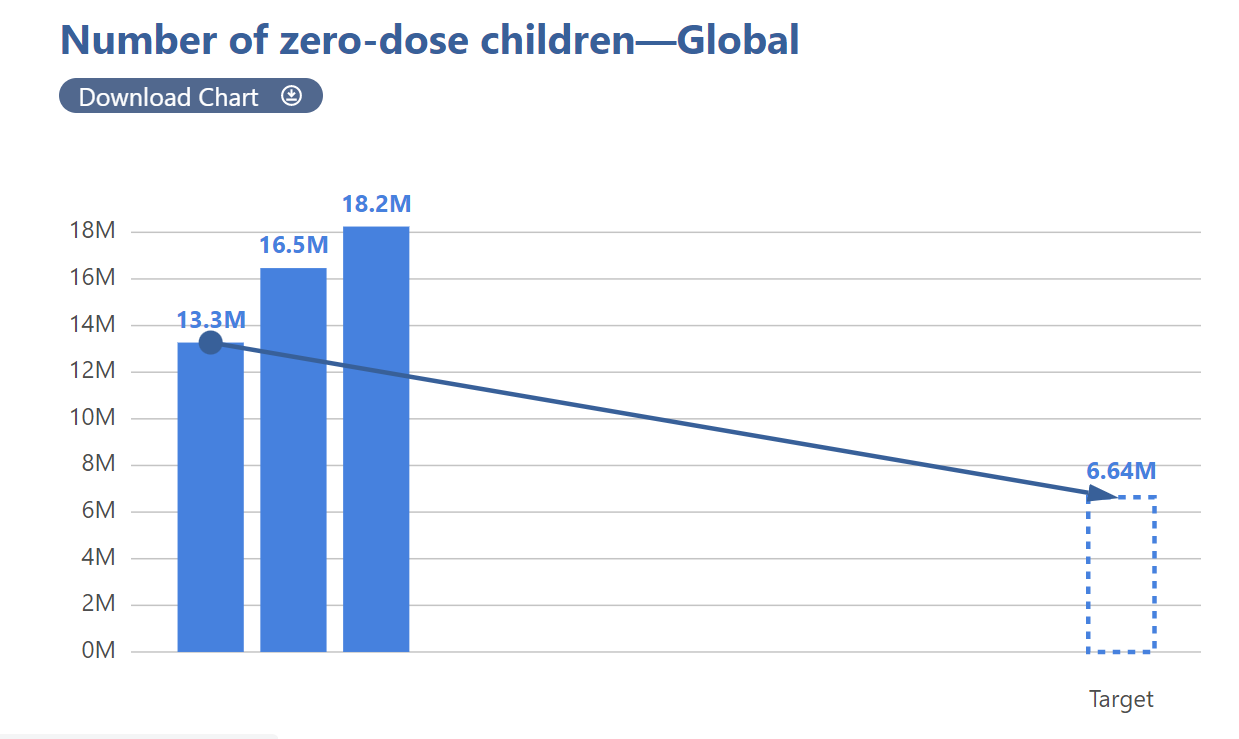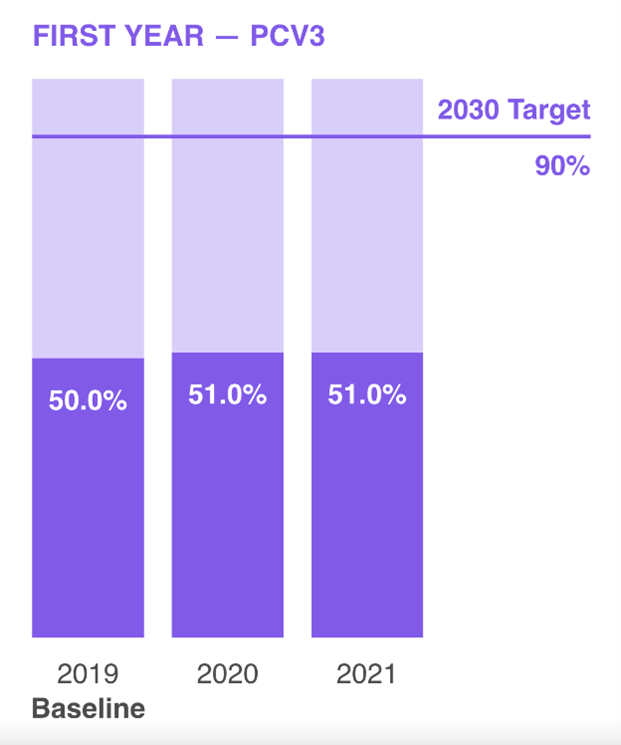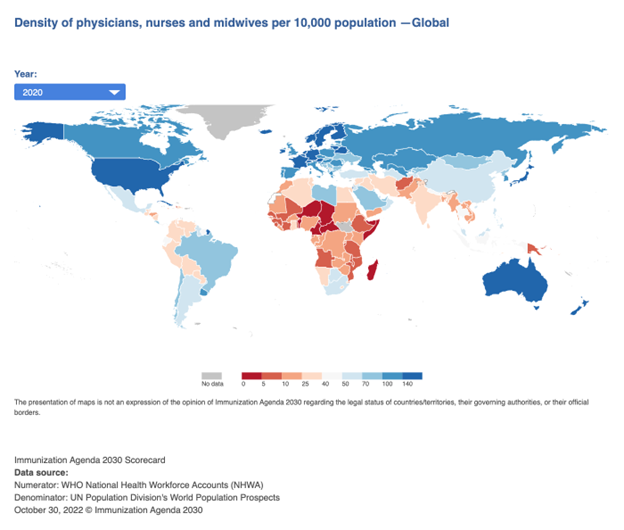
A vaccine scorecard for the globe

An example of the kind of charts available through the Immunization Agenda 2030 scorecard, this image conveys how global trends fall short of zero-dose children coverage targets.
The Immunization Agenda 2030 (IA2030) scorecard is a new publicly available interactive tool displaying data that enables stakeholders at all levels—global, regional, and country—to monitor the status of each indicator in the IA2030 Framework for Action. The scorecard offers insight into core vaccine metrics, such as introduction and coverage, as well as indicators of primary health care capacity and progress toward universal health coverage.
Here we offer an example of how advocates can use the scorecard to monitor coverage of rotavirus and pneumococcal conjugate vaccines (PCV) in low- and middle-income countries. The scorecard offers the following observations:

- In 2021 and 2020, eight countries introduced rotavirus vaccine and seven introduced PCVs. This is perhaps remarkable given the pandemic’s strain on health systems—for instance, the simultaneous introduction and scale-up of COVID-19 vaccines.
- Coverage of PCV was basically stagnant from 2019-2021 (see graphic above). Coverage of rotavirus vaccines increased from 40 to 49%.
- Both vaccines are included in the breadth of protection, an IA2030 measure that combines coverage of vaccines against 12 antigens. This coverage estimate was 68% in 2021, down from 70% in 2019.
 The pace of rotavirus and pneumococcal vaccine introduction has slowed since 2018-2019.Vaccines can’t reach people without a functioning health system, so the IA2030 scorecard visualizes contextual information about health systems facets that affect vaccine introduction and coverage. The scorecard currently visualizes global, regional, and country-level data for 18 indicators, the suite of measures reported out to the WHO’s Strategic Advisory Group of Experts (SAGE) on Immunization. These include health workforce availability (see map below), transparent reporting on safety issues, domestic spending on primary health care, and campaigns to improve vaccine confidence.
The pace of rotavirus and pneumococcal vaccine introduction has slowed since 2018-2019.Vaccines can’t reach people without a functioning health system, so the IA2030 scorecard visualizes contextual information about health systems facets that affect vaccine introduction and coverage. The scorecard currently visualizes global, regional, and country-level data for 18 indicators, the suite of measures reported out to the WHO’s Strategic Advisory Group of Experts (SAGE) on Immunization. These include health workforce availability (see map below), transparent reporting on safety issues, domestic spending on primary health care, and campaigns to improve vaccine confidence.
 Health worker availability varies widely as shown in this map from the IA2030 scorecard. See map on scorecard.
Health worker availability varies widely as shown in this map from the IA2030 scorecard. See map on scorecard.
With scorecard pages for each country, vaccine leaders and advocates can also use the tool to compare performance between countries and against regional measures. Learn more about the scorecard in this commentary.
Rose Weeks, International Vaccine Access Center, Johns Hopkins Bloomberg School of Public Health. The IA2030 scorecard is a collaborative effort led by USAID MOMENTUM Country and Global Leadership, in partnership with representatives from the IA2030 Advocacy and Communication Working Group and Monitoring & Evaluation Working Group, including specialists from the CDC, WHO, UNICEF, and UN Foundation. Strategic decisions were made by the IA2030 Secretariat and IA2030 Coordination Group.


